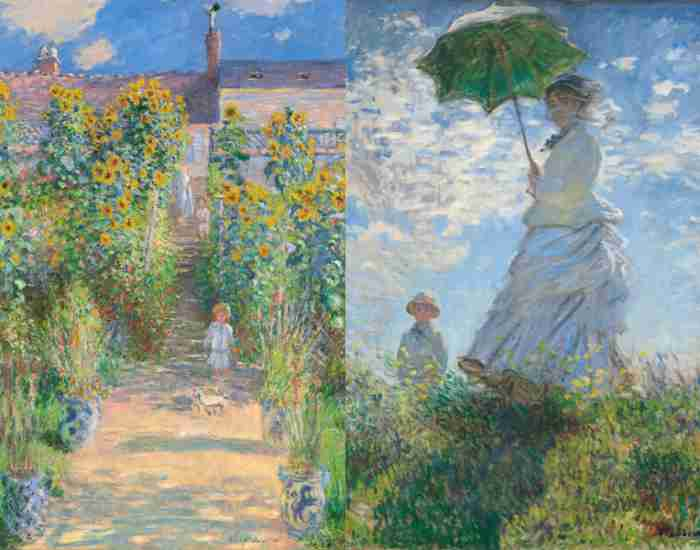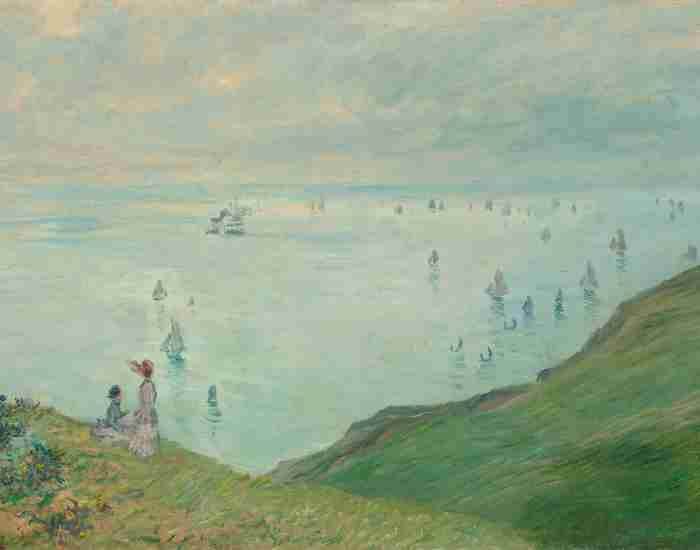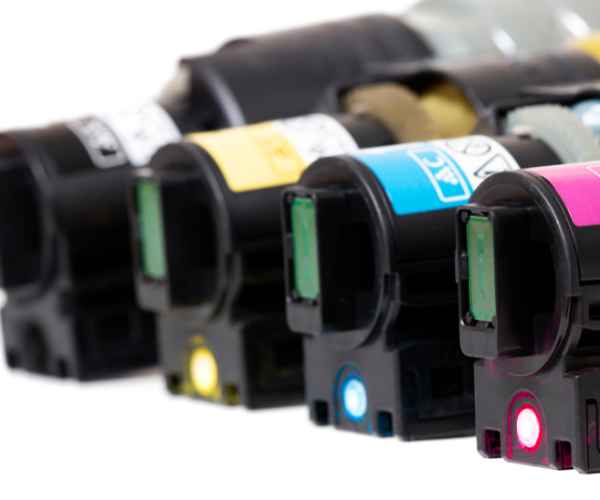In the rapidly advancing age of artistry and innovation, particularly getting exclusive rights to a piece of art, this has come to be a center point for to most people interested in art. This is enabled by the combination of technology and art, resulting in the expansion of digital art and allowing many artists to display their art while being able to get paid for it.
With its immersive nature and using a digital medium, digital art has cut across international borders and reached a larger audience easily with its creatively unique methods. The artistic spectrum in the digital space is without a doubt endless, possibilities of every kind are found ranging from the commonplace of 3D models and visual effects all the way to the complex of animation.
Getting exclusive rights to a piece of digital art should not be seen as just an option but in the current era of time and society it is a necessity. What most people do not understand is the fact that with more and more artists scanning their art and posting it online leads to the realization that there is a need to some monetization. If you’re an already accustomed digital artist or an up and coming artist, one must be acquainted with the new trends which underscore important aspects such as platforms and monetization techniques of digital art.

In this article, we delve into the latest platforms and strategies for monetizing digital art, shedding light on the myriad opportunities available to artists in the digital age. From exploring innovative online marketplaces to leveraging social media platforms for exposure, we navigate the vast landscape of digital art monetization, equipping artists with the insights and tools needed to thrive in today’s competitive market.
Digital Art
Digital art refers to artistic works and creations that use digital technology as a virtual medium. Digital art stretches from digital paintings, illustrations, animations made on computers, and virtual reality installations. It brings together many different artistic mediums into a fully captivating and interactive environment for both the creators and viewers.
Essentially, digital art is a field that uses digital technologies like computers, tablets , software tools etc to create visual arts. Digital arts blurs the line between the use of technology and art. Unlike using paint and canvas to create artworks, digital arts employ the use of computers, creative graphic tablets and many other programs that will help the artist get their message across.
Significance in Contemporary Culture
In current culture, digital art is extremely relevant and reflects the society that we live in which is now technology forward. Digital arts give artists an opportunity to use new forms of art that have not been used before and critique old forms of art while incorporating globalization in their work. Furthermore, digital art cuts across several fields including design, gaming, multimedia, creating impact in various areas of art and culture and making innovations in the process.
Evolution of Digital Art
The beginning of what we call digital art can be traced to the middle of the 20th century when computers were invented. Those who came before us began creating computer-generated logos and developed man-machine interfaces. With the evolution of technology, the limits of art also began to evolve, and new approaches and technologies were developed.
Progress in the Mainstream Market
Time and time again, it has been proved that an idea is only as good as its execution. Today, digital art, which was once, the high rise bane of all artists and art connoisseurs, is widely accepted by the masses and is leading to a paradigm shift regarding the way art has always been viewed. Today, major art institutions and galleries actively seek out and display digital art pieces. Not to mention the advancements made in digital printing technologies where today it has become possible for any digital artist to produce one-of-a-kind pieces that collect-digitally.
Examples of Popular Digital Art Mediums and Styles
While Dali may not have had the technological advancements that we all have today, he sure had a vision and his deeply detailed and structure wide motifs can be witnessed today in the form of what we call digital art. Digital Art is basically a blanket term that can envelop numerous mediums and styles such as – Graphic Novels, Photography, Conceptual Art, Animation. Some popular mediums include:
- Digital Painting: Here is where the most visually appealing art comes into play for artists of all walks of life. To put it simply, a digital painting can be defined as a painting that is painted on a screen and its details are brought to life by a stylus and painstaking shades of color selecting.
- 3D Modeling and Sculpting: This is the process where an artist sculpts a model using a 3D software application and puts together several different models easing his work for the final piece.
- Photomanipulation: This involves photographic arts but unlike straightforward photography, photomanipulation requires the incorporation of more photographic elements, editing and blending these elements into one composition to create a surreal and otherworldly image.
- Pixel Art: Also known as pixel art, this is an artistic work that draws its inspiration from older generation games using small pixels as the center building blocks of a large piece.
Platforms for Selling
In the vast scope of the online world, the platforms for selling digital art provide the ground level for artists to sell their art on the internet and reach potential art buyers around the world. In selling digital forms of art, the market has both established players and smaller art selling platforms targeting very niche audience, making the options as wide as the artworks themselves.
Find out the best sites for Selling Digital Art Online
Saatchi Art
Description: Saatchi Art is one of the well known online art galleries that possesses different forms of art such as digital arts, paintings, sculptures and many more all in one place.
Pros:
- World exposure: Saatchi Art has a huge base of international art collectors and lovers.
- Art Projects’ Promotion: Works displayed on Saatchi Art are selected by experts which helps artists get better exposure and trust.
- Sales assistance: The platform provides assistance with the marketing, shipping, and the customer service which takes the administrative load off the artists.
Cons:
- Commission Fees: Saatchi Art takes a commission fee from the artist for every sale and this can affect the revenue of the artist.
- Competition: Due to the high number of artists available, getting noticed on Saatchi Art can be difficult for the new ones.
Etsy
Description: Etsy is one of the e-commerce platforms that focuses on selling specific products such as handmade, art, designs and even prints or illustrations in a digital format.
Pros:
- User-friendly: Etsy simplifies the processes of creating and maintaining an online store for artists.
- Networking: With the variety of sellers and buyers that are active on the site, Orthodox Ethan often finds good contacts through this site.
- Branding: Artists are free to adjust their stalls and products showcasing on them according their own taste and style.
Cons:
- Transaction costs: Artist selling on the Etsy site has to pay transaction fees on every sale which discourages many sellers.
- Oversaturation of products: The large quantity of products put up for sale by sellers on Etsy makes it easy for an artist’s work to be lost among the masses.
Success Story: Selling Digital Illustrations Sarah’s Success on Saatchi Art
Sarah is a gifted digital artist who was able to make a name for selling artwork through Saatchi Art. Sarah appropriately marketed her highly detailed illustrations of various subjects through Saatchi, which gave her a global and well-curated audience of art collectors. Her art made it big after her becoming a part of Saatchi’s marketing campaigns and selling her art on that platform, as a result, her hard work led to receiving several commissions. So, now Sarah is a professional digital artist who gets the work thanks to the potential Prime Art feature.
On an unrelated note, David is an aspiring abstract prints artist that digitizes his pieces. In order to open his pieces to more potential buyers, he opened a shop through Etsy. Drawing on Etsy’s easy to understand functionality and community engagement, David was able to design a catchy shop display that targets buyers of his work. After pouring extensive effort into social media marketing and events by etsy for sellers, the sale of his prints started to rise along with their positive reviews. Seeing how much he grew in sales in Etsy, David has not decided to stop there, continuing to add to his eye-catching artwork and establish himself as a digital artist with a promising future.
Strategies on How to Monetize
To fuse in the current trend of digital computationart monetizing has become not only an integral part but also a bastion to any artist’s career. While it is vital to have in one’s possession hypnotic designs, their rightful strategies for monetization over and after artwork so as to take advantage of such in their lives as well. There are multiple such ways ranging from the old age ways of license and selling of prints to even commissions or NFT( non-fungible token) that provide the artist an opportunity to eke out a living from beyond the digital spectrum of their craft creations.
Discussing Effective Strategies for Monetizing Digital Art
Licensing
Description: In the case where digital works are to be utilized for certain tasks in exchange for a fee or royalty, licensing is needed by the service providers granting works.
Tips:
- Research the licensing agreement: study the type of licensing agreements available to artists and seek to prepare terms that suit your artistic business and aim and our values.
- Protect your registered copyrights: see to it that your works of art are copyrighted or go through copyright registration so as to avoid abuse or the illegal usage of your work.
- Be competitive in pricing your licenses: Create a reasonable and competitive environment for your licensing agreement pricing depending on the usage rights, time offered, and the exclusivity involved.Printing artworks required to be re – produced on canvas gives an artist an opportunity to sell his or her trusted original piece at an affordable economic spectrum its downside is howbeit tedious selling a fine digital reproductions after that.
Here’s what to keep in mind:
- Use trustworthy printing services: Work with established printing services if you want your digital art to look good when printed out.
- Sell limited editions: Create limited runner prints that are signed by the artist and number them. This will create an aura of exclusivity.
- Advertise your prints: Reach out to potential buyers through ads on social media, email newsletters, and various online platforms.
Commissions
Description: Commissions are agreements in which an artist creates work for a client according to requirements provided.
Tips:
Have proper terms and agreement. Any contract such as that should clearly detail the task, deadline, cost, and changes required to avoid being taken advantage of.
Show your work. Present other pieces you have done to your clients so that they will get to know your style and your range of works.
Be available. This will make sure that the client will be happy with the final product and is worth the commissioning fee.
NFT (Non-Fungible Tokens)
Description: NFTs are digital assets that link proof of ownership or proof of authenticity of any digital item that is unique.
Tips:
- Learn about NFTs: Understand the concept of NFT along with its transaction method through block chain and any digital marketplace where NFTs are sold.
- Mint for your digital creative assets: Make use of NFT platforms to mint and tokenize your digital creative assets, thus allowing the purchasers to have proof of authenticity and rights of ownership.
- Sell your Digital Collectibles in an efficient way: Use social media, NFT marketplaces, and forums to advertise your NFT artwork and sell them to interested art collectors.
Share with the Artists Practical Tips to Apply New Techniques
- Innovate: Keep in the scope of the industry improvements, new technologies, and market gaps that will provide ammunition to reform your monetization strategies.
- Establish Your Presence: Build a solid digital presence through social platforms, personal blogs, and communities of artists with proper branding to appeal buyers.
Collaborate with other artists, collectors, and people in the industry to seek for more opportunities and broaden potential market areas.
Additionally, make use of the aforementioned techniques in gaining more than one revenue source, mainly from selling different items, subscriptions, and licensing art to be less risky.
Creating a Solid Digital Identity
Also, these days, the most difficult task is to create an identity in the market. In the case of digital artists, a strong online identity helps get the attention of the viewers, showcase the work done, and position in the highly competitive art marketplace. Today, a strong online identity not only gives more visibility to an artist, but also increases fan interaction and loyalty, and a range of other opportunities in the industry. In this post, we will discuss why a strong online presence is important for digital artists, as well as how to effectively manage social networking and personal sites to increase their visibility.
x
Emphasize the Importance of a Strong Online Presence for Digital Artists
A prominent online profile acts like a digital gallery for users as they get an opportunity to display their work, narrate their story, and connect with supporters as well as customers across the globe. In a world that is becoming increasingly globalized, a user-friendly website or an attractive page on social media frequently serves as the first impression an audience will get of a particular artist, thus it plays a crucial role in brand marketing. Not only that, but it also helps to shape the online image of the artist which leads to receiving an increased number of collaboration requests, invites to join a gallery, or being commissioned.
Offer Suggestions for Improving Social Media and Websites
Uniform Branding
Ensure that your branding is constantly consistent throughout all of your online platforms, be it on the social media accounts, websites, or pages. Make sure to use the same set of colors, fonts, and images in order to develop and strengthen your brand to the website viewers.
Comprehensible Content
Generate and distribute content that your target audience will like. Try using various types of content such as sneak peeks, ongoing progress, tips and tutorials, as well as interviews with the artists to keep the followers engaged.
Online Relationship Building
You should try to build a community by answering the comments and messages that your followers leave in the comments section. Create a dialogue, ask some questions get feedbacks so that you can have a really good relationship with your audience.
FAQs
What is digital art?
Digital art is defined as, artworks that has for its main form of creation or manipulation, the use of a computer. Work in this form includes a variety of forms of art such as digital painting or illustration, animations, and multi-media installations, which are done with the help of graphics tablets, software packages, and cameras.
How Can I Monetize My Digital Art?
There are a number of avenues to earn from digital art some of which include: Selling of prints or originals via different websites. Licensing of one’s artwork. Receiving requests for custom made artworks and prints by different clients. Societies or organizations can also sell screws, brushes or even examples of digital art.
Using blockchain platforms to make and/or sell non-fungible tokens (NFTs) of a digital artwork.
Allowing other users to pay for their access to certain content through digital subscriptions or memberships.
What Are Some Good Ways Of Earning Money With Digital Art?
Good ways of earning money with digital art include the following:
Positive image creation through social networks and personal websites.
Joining virtual art groups as well as communicating with different artists and industry specialists.
Utilizing several revenue generation strategies to broaden the scope of business activities.
Setting the prices of an art work based on its market value, the work’s dimensions, art style, and the degree of its complexity.
Incorporating various marketing techniques such as email campaigns, writing articles and blogs, and cross-promotion to increase exposure.
How Should I Price My Digital Artworks?
Factors that will inform the pricing of your digital artwork include:
The size and intricacy of the work.
The artist’s experience and how established they are.
Current state of the art market and its consumers’ preferences.
The purpose and the possible application of the work, including licensing.
Cost of materials and the time taken to work on the particular piece.
What Are The Things I Need To Pay Attention To In Relation To Copyright Issues?
When it comes to earning from one’s digital artworks, copyright issues cannot be ignored. Thus, it is important to remember the following points:
Try to define the copyright laws and intellectual property rights which in regard to your art work are relevant.
Clearly specify the rights: how users can interact with the work and what licensing options exist.
Place a watermark over each of your digital photos to avoid misuse and incorporation.
Think about the copyright office or a blockchain platform registration of your artwork to ensure that you can prove ownership.
How to Promote Digital Art Efficiently?
To complete this task properly you need:
First promoting artwork on social networks such as Instagram, Twitter or Facebook.
Improving the visibility of your website and online portfolio for search engines in improving the visibility and discovery potential.
Secondly engaging influencers, art bloggers and online publications in providing visibility to new audiences.
Staging art, practicing art where your bought artwork and sell it to prospective customers.
How do I Promote My Digital Art covers on Social Media Platforms?
To make an impact using social media platforms consider the following:
Promote the digital cover art through high resolution images or video of the art show.
Use hashtags or keywords in the post for wider reach.
Interact with the audience in the comments section, with questions and answers or by showing what sort of things happen when you are not on the screen.
Utilizing stories, reels, IGTV and more because the attention of the audience is continuously changing.
Which Digital Artistic Tools Will Boost Professional Creative Work?
There is a range of tools and software for digital artists, such as:
Graphic design programs like Adobe Illustrator, Photoshop, and Procreate are purposefully designed for extension of artworks in the form of digital drawings and paintings.
3D animation and 3D modeling programs as blender, 3D Max, maya, Cinema 4D are used for producing artworks and animations in three-dimensional form.
Artistry can also be done electronically through Digital drawing/specialized tablets and pens including Wacom Intous and Apple pen.
Also, there are several commercial websites and portfolio pages like Behance, Art Station, and Deviant Art for easy purchase and advertisement of digital art.
Conclusion
To sum up, selling and advertising digital art can be described as a multi-level activity that is suitable for people who are ready to think critically and are creative. In this article, we have examined in great detail several ways through which a digital artist can start making money including the sociocultural aspects of a digital art and how to earn money in our day and age by creating something that seems simple but is greatly needed.
We also discussed strategies to monetize artwork including for all digital artists. In this regard, we presented some recommendations on how to enhance social networks and personal pages on the website. We stated the importance of branding and telling a story in engaging an audience and creating relations with fans and customers.
To summarize, it is possible to point out that the selling of digital art is not by itself enough and that creating an art career in the 21st century is far more complex but doable. And as long as the technological advancement remains the same, it will always be significant for the artists to adjust and make use of the new ways to earn from their digital artwork.
- More Post: The Best Printer for the iPad: What Is It?
- More Post: The top 5 best printers for crafting in 2024





